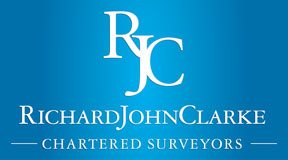 When his retirement village outside Stroud, in Gloucestershire, went bust – with many of the leasehold properties unsold – Peter Wilson and the other residents decided to buy the site off the administrators, raised £2 million and now run the site themselves. The result is Woodchester Valley Village, a mutual ‘not for profit’ retirement village. What the elderly residents have achieved has captured national attention.
When his retirement village outside Stroud, in Gloucestershire, went bust – with many of the leasehold properties unsold – Peter Wilson and the other residents decided to buy the site off the administrators, raised £2 million and now run the site themselves. The result is Woodchester Valley Village, a mutual ‘not for profit’ retirement village. What the elderly residents have achieved has captured national attention.
It is also a standing rebuke to some of the retirement housing providers operating in the sector.
Here Professor Wilson, who was professor of management at Bedfordshire University, writes of his experiences following the Sunday Telegraph article earlier this month which outlined at length the views of Campaign against retirement leasehold exploitation.
And he makes the point that a properly self-run retirement village can hugely improve the quality of life of the residents – and lead to considerable financial saving. His table of comparison costs is at the end of the article …
In the Sunday Telegraph of April 7the 2015 Liz Hodgkinson wrote about the dangers of buying a retirement property and rightly quoted Sebastian O’Kelly, of Campaign against retirement leasehold exploitation,* who warned that buying such a property could be the worst financial decision many people will ever make.
It is a fact that new retirement properties cost more than the equivalent ordinary home, but that is because you are not just buying a house but you are also buying the right to use often extensive gardens and very substantial communal facilities which cost a lot to create and build.
It is true that service charges can be higher, but then in a retirement property many more services are often available, which go well beyond the basic services provided for a block of flats.
It also true that the service charge can get inflated, for the profit of the freeholder unless the leaseholders are ever vigilant.
Finally, there can be problems in selling.
When the very elderly leaseholder needs to sell to go into a care home, or their family inherit and have to sell, they may have to sell to the freeholder or may find themselves paying a lease transfer fee of 10 per cent or more of the property’s market value.

At Woodchester Valley Village, near Stroud, the residents simply took over the retirement site when the commercial operator went bust
There are solutions
These few truths are enough to justify not buying into a retirement complex, and I confess that I may have unwisely bought a three-bed roomed house in a retirement village that was then called Crystal Fountain Retirement Village.**
But my subsequent experience as a leaseholder and member of the mutually owned Woodchester Valley Village demonstrates that choosing to live a retirement village can be financially prudent, and a move which can enhanced the quality of life.
Financially it need not cost more
We down sized by over 50 per cent from an old cottage with a hillside garden and moved about four miles to buy a retirement home that is not a flat in a town block but a three-bedroomed house within a retirement community.
We missed our garden, but we knew eventually we would not cope and would need help with that and I was tiring of the endless demand of maintaining an old structure.
Seven years later we now appreciate the fact that we moved early, at 70 plus, in our own time rather than waiting and perhaps waiting too long such that we could not face the upheaval of moving and dispersing a lifetime’s accumulated possessions.***
The idea of paying a substantial annual service charge was hard to accept.
But our annual household accounts reveal that we are spending less now on home essentials than previously to maintain our cottage and hillside garden.
Previously, we paid a range of housing costs individually and they were spread over the year, so we did not notice what they added up to over the year. Now many of those costs are included in the service charge. Typically, owning a house can cost £4-5,000 a year and that goes a long way towards paying a service charge.
In addition, there is extra income arising from investing the money realised in downsizing. Did we ever use all that space in our old home?
Later when much older and no longer able to drive costs can be cut from not owning a car, a depreciating asset, but only if there is access to an alternative. Because retirement villages usually have a minibus there will not be a need to hire expensive taxis all the time to do the shopping or just out to the pub for a meal. At the end of this article is a summary of typical costs.
Careful consideration of what is already being spent annually lessens the shock when told that there is an annual service charge.
 For the widow/widower aged over 85 no longer driving a car, the financial results of retirement living can be very favourable.
For the widow/widower aged over 85 no longer driving a car, the financial results of retirement living can be very favourable.
However, there are three big savings that need mentioning from which we now benefit by living in a mutual retirement village.
The first saving is because our village is a mutual we, as members of the freehold company, ensure that no-one is taking an unfair profit so we achieve much lower services charges for the same level of service.
We get the services we want, and we make sure the suppliers do not overcharge us. In keeping costs under control and maintaining the quality of services, value for money, we get to choose our own manager who is accountable to directors we elect.
The manager works for us rather than a private landlord, and maybe charged to protect the profit of the private landlord. A private landlord can add 10 per cent to all costs, so what incentive is there for him to find the lowest price for the benefit of the leaseholders if it cuts his income?
We have the services we want and are not burdened with services a private freeholder can insist upon providing and profiting from.
The second saving, and it is not inconsequential, comes later in life, or maybe death, when needing money for terminal care or wishing to leave it all, less inheritance tax, to the children.
It is normal when leaving a leaseholder retirement property to pay a transfer fee. Some villages charge one per cent of the property value for each year in residence. So for a £200,000 flat, that is £2,000 a year. For a house it could be £3,500 plus a year.
Admittedly this is paid when you leave, but it could be £35,000 or more, which will pay for a lot of care or help with inheritance tax.
In the mutual Woodchester Valley Village we pay a one per cent transfer free however long you live in the village, so given a typical 10 year tenure that is equivalent to a mere £20 – 30 or less a month.
The third saving is influenced by the length of the lease. The shorter it is the more likely it is that properties will decline in value. Something around 100 years is normal, so selling prices soon start to fall.
Instead, our village has leases of 999 years.
Quality of life
We moved soon after we were 70 and the first gain was that we did not have to worry about the garden, the lawns, and the cat whenever we go away.
We now take more holidays.
The second benefit, which we had not expected when we moved, although those selling properties emphasise it, can be summarised in three words – security, companionship, support.
We go away with the knowledge that the manager and staff are watching over our home, the grass will be cut, and the cat cared for. We stayed within the area and so kept our friends and activities, but we have come to appreciate having similarly retired neighbours close at hand***.
We can meet over coffee in our village lounge, we have lunch when we wish with them in the village restaurant, meet for bridge or in the book group, or take the village bus to the theatre, safely having a drink before and in the interval. Only if you choose to be on your own can you avoid the companionship of interesting neighbours.
As you get older support becomes important. If your cleaner is not available the head housekeeper ensures someone trustworthy steps in and does your dusting and vacuuming. If you do not feel like it, shirts are washed and ironed for you, and when a problem arises with a leaking roof or a blocked drain the village manager gets it fixed.
However, because we are fortunate to live in the mutual Woodchester Valley Village, we not only keep our independence but have a say in how the village is run and, if we want, can organise the reading group, tend part of the gardens or be a director.
Downsizing to a retirement village like ours can save an elderly widow/widower, say 85 plus, a few thousand pounds a year but peace of mind for all the family is the critical advantage.
For those who make the decision earlier in life there may be little or no immediate savings, but the advantages to lifestyle can be great.
However, just freeing oneself, at say 70/75, of property maintenance responsibilities to provide more time for grandchildren and for holidays is not what it is about.
The important benefit of moving early is that settled in a friendly, supportive, environment, with no removal upheavals to fear, is to be better able to respond and, when the time comes, cope with the attendant issues of ageing and yet continue to maximise the enjoys of retirement.
Choosing how and where to live in retirement is both a financial and long-term lifestyle decision.
Choosing retirement village living or not needs careful thought about what you want from life in retirement and planning for the possible outcomes of aging.
Sebastian O’Kelly and Liz Hodgkinson are right to suggest that without careful research buying a retirement home can be a bad choice, but remember it is not just choosing a house: it is about choosing how best to have both a good lifestyle and, at the same time, provide for possible long-term needs.
That is true of all major financial and life decisions including choosing a partner for life!
Peter T Wilson, 15th April, 2015
petertwilson@dsl.pipex.com
*Campaign against retirement leasehold exploitation: Campaign Against Retirement Leasehold Exploitation
**Crystal Fountain Village: a few years after my wife and I bought a house in the village, went into Administration and as Chairman of the then Residents’ Association, with great support from many Residents and their families, I helped to buy the village and create Woodchester Valley Village, a mutual ‘not for profit’ village. Pressed we may admit that we do not regret buying into a village with a private Landlord but we soon learnt the possible financial pitfalls of such a decision and urge others to be careful where they buy but above all whoever owns it living in a well run retirement village can deliver enormous life style advantages both at 75 and at 90.
***My sister, now approaching 90, sensibly bought on retirement a nice new bungalow with a good garden and with neighbours of her own age. Now she complains, with good reason, that she lives in isolation. There is no family nearby to support her. The bungalows have changed hands and all her neighbours now go out to work.
How much does it cost to live in a retirement site?
These are estimated basic costs for someone aged 70-75 years old, and for those aged more than 85 yearsCosts are to the nearest £5 per month
| Stay at family home aged 70-75 | More to retirement village aged 70-75 | Move to retirement village at aged 85 plus | Stay at family home aged 85 plus | What retirement village offers | |
|---|---|---|---|---|---|
| Council tax | 225 | 125 | 90 | 225 | Downsize band G to D/C |
| Building insurance | 60 | 0 | 0 | 60 | Included in service charge |
| Gardener 1-2hrs pw | 20 | 0 | 0 | 40 | Included |
| Cleaner 1-2hrs pw | 15 | 0 | 15 | 30 | One hour cleaning included |
| Window/gutters cleaning | 10 | 0 | 0 | 10 | Included |
| External decoration | 25 | 0 | 0 | 25 | Included |
| External repairs | 15 | 0 | 0 | 15 | Included |
| Fences and hedges | |||||
| Drive and paths, lighting etc | 5 | 0 | 0 | 10 | Included |
| 24hr duty staff | n/a | 0 | 0 | n/a | Included |
| 24hr emergency call out service | n/a | 0 | 0 | 20 | Included |
| Basic laundry | 15 | 0 | 0 | 30 | Included |
| Concierge | n/a | 0 | 0 | n/a | Included |
| Chauffeur service | n/a | 0 | 60 | 200 | Contribution to costs / taxis |
| Small car | 150 | 150 | 0 | 0 | |
| Service charge | 440 | 440 | |||
| Capital released downsizing | -300 | -300 | Invested net of tax | ||
| Transfer fees on sale after 10 years | 20 | 20 | |||
| Net cost per month | 540 | 435 | 325 | 665 |























